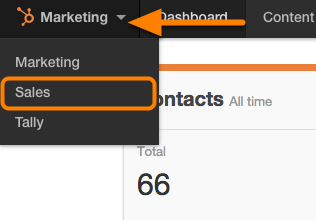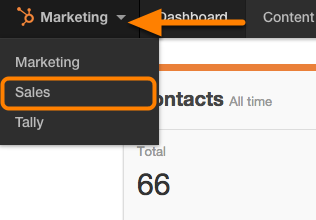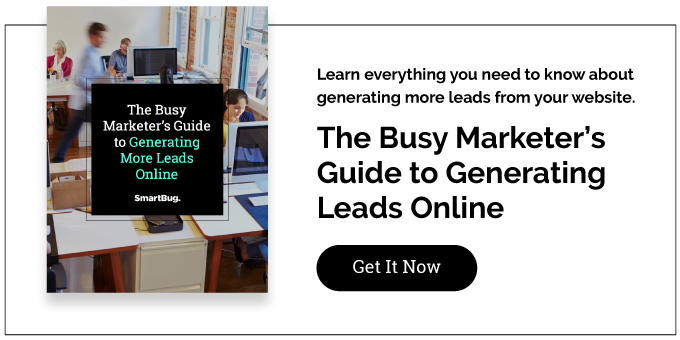
How to Integrate Your CRM with HubSpot If You Don’t Use Salesforce.com
December 30, 2014
By Andrew Macey

It is an important step to integrate your CRM and HubSpot together. Sharing marketing data with sales, and sales information back to marketing, helps to empower both teams exponentially. For many customers, the integration process can be daunting. There are a lot of moving parts, with information sharing back and forth all the time, and getting both systems to speak to one another can seem like quite an undertaking. Fortunately, there are many options. If a customer is using Salesforce.com, the integration is very straightforward, using a custom-built connector. However, many businesses use any number of different CRMs, all of which house their invaluable sales information. It’s important that this process be equally as simple. Fortunately, there are a variety of ways to connect your CRM to HubSpot if you are not using Salesforce.com.
Why CRM Integration with HubSpot is Important
Integrating your CRM with HubSpot is all about sharing information. One valuable result is closed-loop reporting. By sharing sales and customer data with your marketing platform, you are able run full reports based on customer lifecycles. This way, you can attribute which marketing campaigns actually yielded customers, and which lead sources are most profitable. Your sales team also benefits from this data share. When integrating HubSpot with your CRM, all new leads are created in the CRM system immediately. This saves significant time in the data-entry process, and allows your sales team to follow up almost instantly from when a visitor becomes a lead. Shortening the time between when a lead fills out a form and when they are in contact with sales can significantly increase the overall customer conversion rate. Finally, sharing sales data with the marketing team helps to setup future campaigns. When sales information is in the hands of the marketing department, strategic list segmentation and lead nurturing campaigns can be taken to the next level.
CRM Integration Options
-
Pre-built Integrations: If your company does not use Salesforce.com, you still have options when integrating with HubSpot. The first, and possibly easiest option, is to use a pre-built connector. An example of this is Zapier. Zapier has a variety of integrations for commonly-used CRMs as well as HubSpot, which can easily be connected through “zaps”. If you want to have a new contact created in your CRM when there is a new contact in HubSpot? There’s a Zap for that. Another great aspect of Zapier is the cost. For most plans, it is a small monthly fee. Obviously, if you have many systems connected at once, this cost can increase. One thing to note: this is a very simple integration. If you are looking for a robust, bi-directional sync, you may have to look into another option.
-
Integration by a HubSpot Partner: There are some cases where a Zapier integration won’t suffice. It’s possible that you have a custom CRM that Zapier doesn’t have a connection with, or you want some additional functionality that doesn’t come standard. In that case, working with a HubSpot partner to perform and manage the integration can be a viable option. Working with a partner can provide you with real peace of mind, as they are experts in the field and can continuously manage the connection over time. Furthermore, partner agencies provide support for their integrations on an ongoing basis. Because this is a more hands-on process, there is a higher cost as well. Depending on the complexity and the level of management you are looking for, this option can be significantly higher of a monthly fee. This is a great option, especially if you want your integration done right and the security of ongoing support.
-
Use an In-house Developer: If you like to keep these projects in-house, integration between the two systems is certainly doable. HubSpot provides excellent documentation on their developers site, and allows you to work within a sandbox environment. Furthermore, there is full API documentation and a great developer forum where partners, HubSpot developers, and customers can share knowledge and ask questions. For those customers that have these development resources in-house, this is an option. It’s important to note that HubSpot does not support custom integrations, nor will they help implement the connection. Many customer avoid this option as it is the most time-consuming. For the time it takes to understand the connection process, build out integration and continuously manage it, it can be more beneficial to employ either a pre-made integration through Zapier or work with a HubSpot partner.
Overall, there are many options you can take to integrate your CRM with HubSpot, even if you’re not a Salesforce.com customer. Depending on the level of complexity, there may be one or more options that best fit your needs. Undoubtedly, the benefits outweigh the costs of integration immensely and every HubSpot customer should look into connecting their sales and marketing as soon as possible.

About the author
Andrew Macey was formerly the Director of Sales at SmartBug and is a HubSpot alumni. He has more than 5 years experience in inbound marketing and is a graduate of the University of Vermont. Read more articles by Andrew Macey.





















